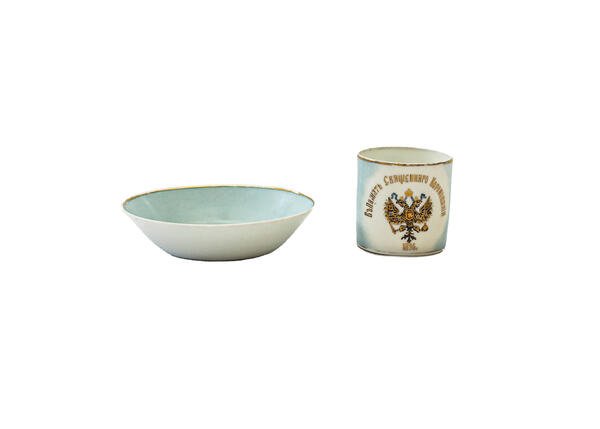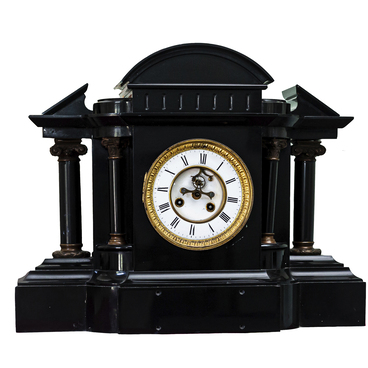The mug and saucer set, presented at the museum, was made for the coronation of Nicholas II, the last Emperor of Russia, in 1896. It was not possible to establish exactly which factory made this set, as there is no branding.
The set is made of hard-paste porcelain. The painting was applied on top of the glaze. The cup is pale blue and gilded, and on the opposite side of the handle the coat of arms of the Russian Empire is painted. Above it, is an inscription in gilded curly letters: “In memory of the sacred crowning”. Under the coat of arms, the date is stamped — 1896. The design is executed in black and red colors with gilding. The edges of the pale blue saucer also have a thin gilded band at the top and on the bottom.
Two Russian emperors Alexander II and Nicholas II visited Tyumen. The former came as heir to the throne during his trip across Russia, the latter — after his abdication.
In August 1917, Nicholas II and his family passed through Tyumen on their way to Tobolsk, their place of exile. From the city railway station, their train traveled along the “Ignatovskaya line”, named after a Tyumen merchant and industrialist Ivan Ignatov, and stopped at a floating passenger quay. At the quay of the West Siberian Shipping Company, the royal family spent six hours on the night of August 17.
In his diary, Nicholas II wrote
The set is made of hard-paste porcelain. The painting was applied on top of the glaze. The cup is pale blue and gilded, and on the opposite side of the handle the coat of arms of the Russian Empire is painted. Above it, is an inscription in gilded curly letters: “In memory of the sacred crowning”. Under the coat of arms, the date is stamped — 1896. The design is executed in black and red colors with gilding. The edges of the pale blue saucer also have a thin gilded band at the top and on the bottom.
Two Russian emperors Alexander II and Nicholas II visited Tyumen. The former came as heir to the throne during his trip across Russia, the latter — after his abdication.
In August 1917, Nicholas II and his family passed through Tyumen on their way to Tobolsk, their place of exile. From the city railway station, their train traveled along the “Ignatovskaya line”, named after a Tyumen merchant and industrialist Ivan Ignatov, and stopped at a floating passenger quay. At the quay of the West Siberian Shipping Company, the royal family spent six hours on the night of August 17.
In his diary, Nicholas II wrote



